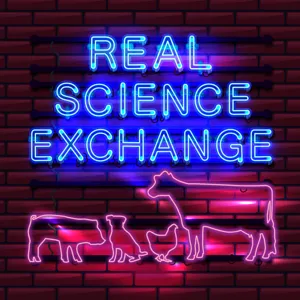Journal Club: Lactational performance effects of supplemental histidine in dairy cows: A meta-analysis

Dr. Räisänen completed this research during her Ph.D. at Penn State. The meta-analysis included 17 different studies published between 1999 and 2022 investigating supplemental histidine for lactating dairy cows. They divided the type of supplemental histidine between infused histidine and rumen-protected histidine and the basal diets between corn silage-based and grass silage-based. (4:34)
Primary response variables measured in the meta-analysis included dry matter intake, milk production, milk composition, and milk component yields. The researchers also calculated the efficiency of utilization of histidine and other amino acids supplied to the cow by the diets. Lastly, they calculated marginal recovery of histidine and evaluated the interaction between histidine supply and energy supply and how that impacts the efficiency of utilization. (7:38)
Dr. Lapierre gives a little history of histidine research. When recommendations were coming out about lysine and methionine requirements, the different studies recommended relatively similar amounts of lysine and methionine based on the proportion relative to MP supply. On the other hand, recommendations for histidine varied widely depending on the study, ranging from less than 2% to almost 4%. As emphasis has been placed on reducing the footprint of dairy production, interest has risen in feeding lower-protein diets. In this scenario, we would expect an increase in the microbial protein; however, microbes are relatively low in histidine content. If we look at the proportion of histidine relative to MP, as the crude protein concentration of a diet decreases, this proportion of histidine decreases. (8:34)
The meta-analysis revealed a clear response to histidine in milk production, dry matter intake, and milk true protein yield. Susanna and Helene are not sure if the dry matter intake response was due to a pulling effect because of increased milk and milk protein yield or if histidine has an independent impact on the brain, as has been observed in some monogastric studies (16:15)
Clay asks the guests what they think the histidine requirement is, and both agree that providing one number is not practical given the other interactions from basal diet to the efficiency of utilization to the concentration of other amino acids in the diet. (32:01)
Practical implications from the meta-analysis include an understanding that lower protein diets may very well need supplemental histidine for optimum performance, and cows pay a penalty when inadequate histidine is supplied. (35:09)
Helene’s take-home message is that histidine should be taken seriously. If you don't supply enough of it, then you'll have a penalty in your cows’ production. Further, the efficiency of histidine utilization will be affected by the energy supply, and we have tools with NASEM to assess if a herd is receiving sufficient histidine. Susanna echoes Helene’s message and adds that a rumen-protected histidine product on the market would be very helpful. (45:35)
The paper can be found here: https://www.journalofdairyscience.org/article/S0022-0302(23)00416-2/fulltext
Please subscribe and share with your industry friends to bring more people to join us around the Real Science Exchange virtual pub table.
If you want one of our new Real Science Exchange t-shirts, screenshot your rating, review, or subscription, and email a picture to anh.marketing@balchem.com. Include your size and mailing address, and we’ll get a shirt in the mail to you.


